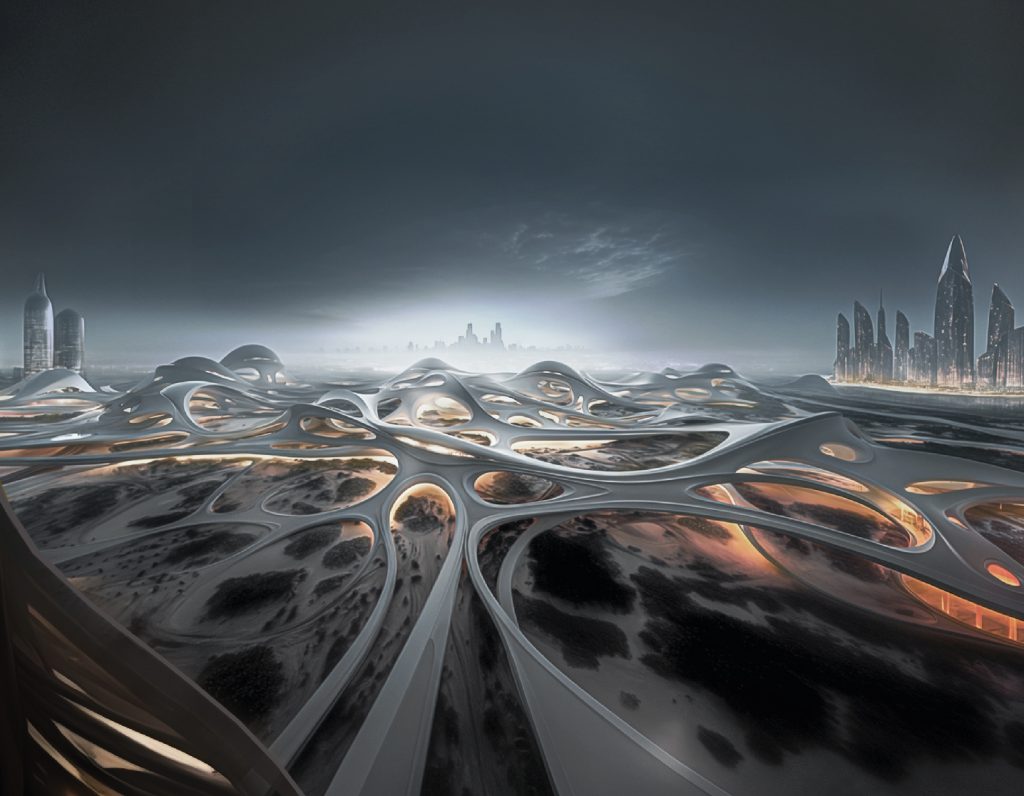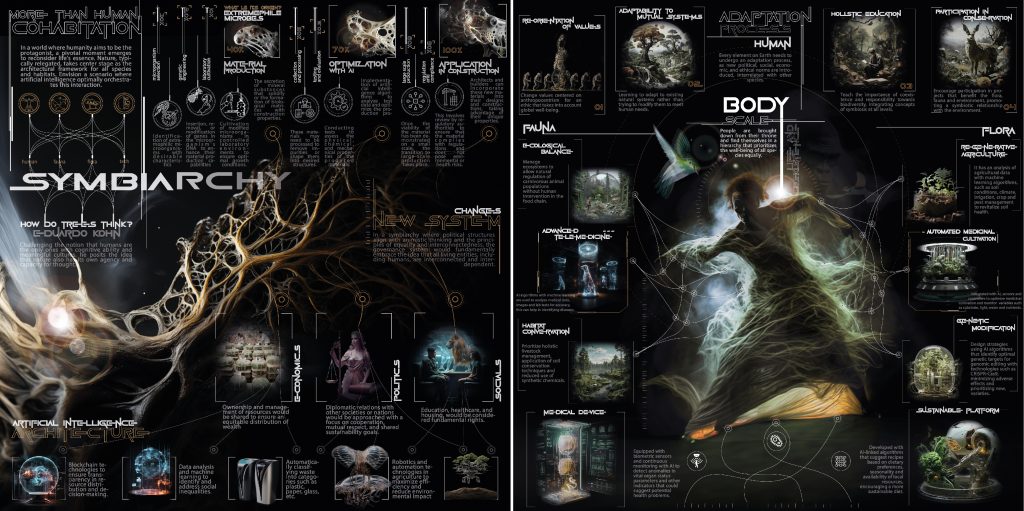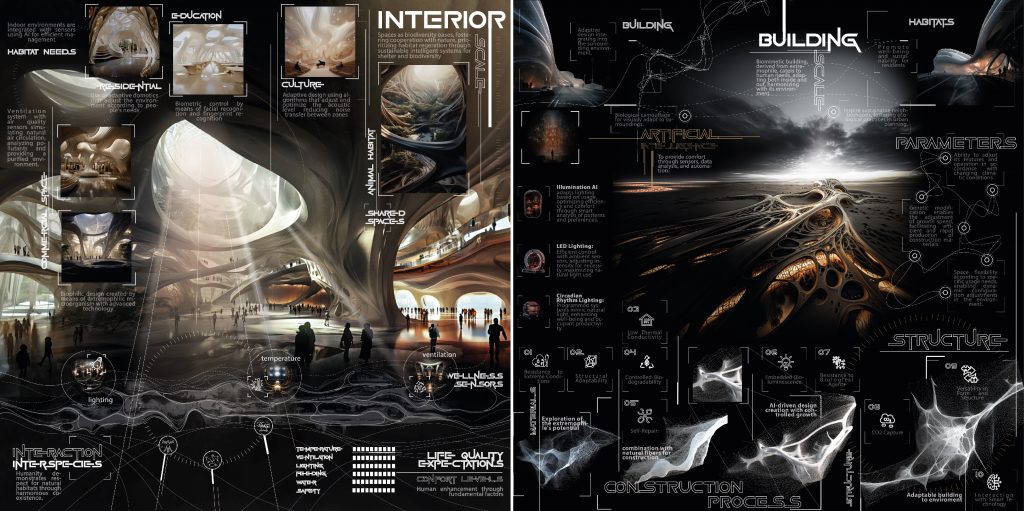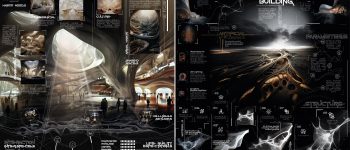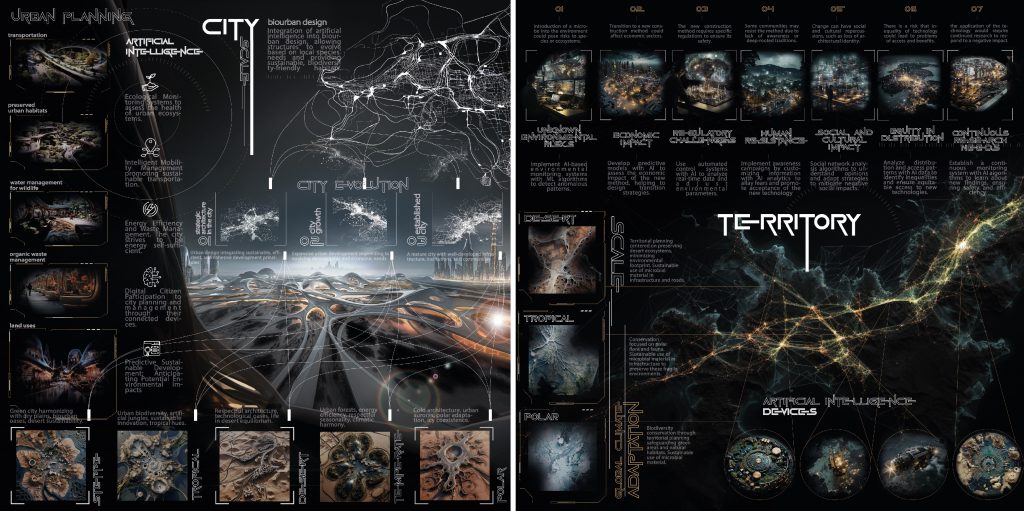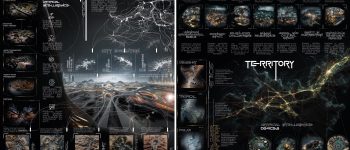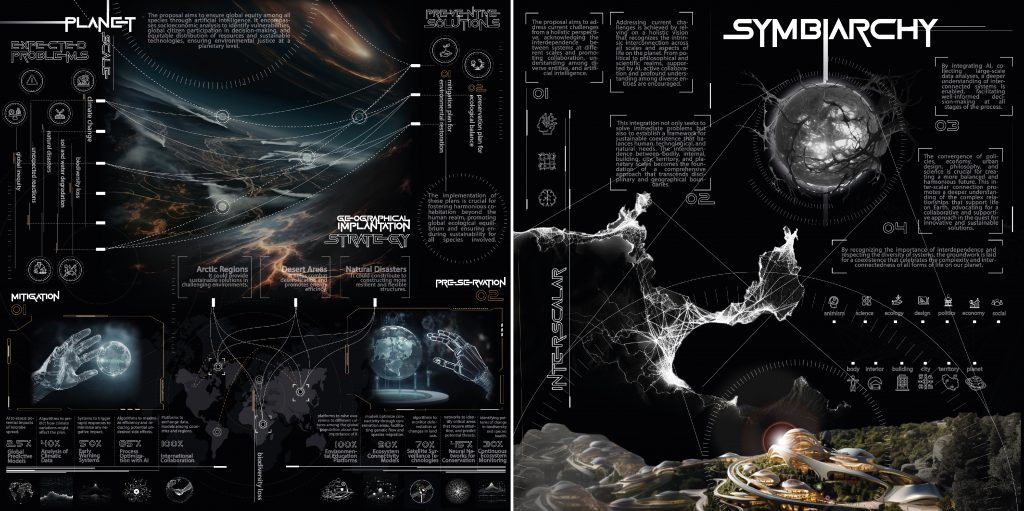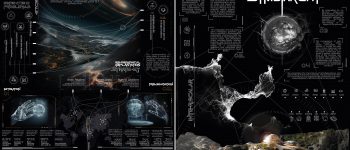The project was developed from the corporal scale, through the interior scale, building, city, territory, planetary, concluding with the combination of all scales to achieve symbiosis and propose a real solution for life.
The “Symbiarchy” project emerges as a futuristic vision that envisions the integration of artificial intelligences, advanced technologies, and bioarchitectural principles to forge a world where architecture not only meets human needs but also harmonizes with the natural environment, including animals, plants, and other living elements.
At the core of this proposal lies the utilization of extremophile microbes, organisms capable of adapting to a wide range of adverse conditions, from polar climates to high levels of radiation. These microbes serve as the basis for creating materials through an innovative process of bioarchitecture in specialized laboratories. Through this pioneering technology, scalable materials are developed that can be used in the construction of buildings with organic and sinuous forms, capable of integrating harmoniously with their surroundings.
These structures not only offer habitable spaces for humans but are also designed to benefit wildlife. Building facades can become habitats for birds, incorporating water sources and natural shelters, while urban furniture is adapted to provide support to various living creatures. This entire process is supported by artificial intelligence systems, which ensure that the interaction between architecture and the environment occurs in a balanced manner without generating additional negative impacts.
At the urban level, planning is oriented towards urbanism that fosters connectivity and coexistence among species. Urban fabric is designed following patterns inspired by nature, establishing fluid connections between different urban spaces, analogous to a biological network or the genetic code of a living organism. This urban structure promotes species mobility and encourages biological diversity in urbanized environments.
On a broader territorial and planetary level, comprehensive mitigation and prevention plans are implemented to safeguard global ecology. These plans include measures for the conservation of natural habitats, the restoration of degraded ecosystems, and the promotion of sustainable practices in all areas of human activity. Technology and artificial intelligence are employed as tools to monitor and manage the environmental impact of human activities, ensuring long-term ecological balance.
In summary, the “Symbiarchy” project represents a comprehensive and holistic vision of the architecture and urbanism of the future, where the harmonious coexistence between humans and nature is the guiding principle. Through the integration of advanced technology, bioarchitectural principles, and artificial intelligence systems, the aim is to create built environments that are not only functional and aesthetically appealing but also regenerative and respectful of the environment. This innovative approach seeks to transform not only the way we conceive and build our cities but also to redefine our relationship with the natural environment, promoting a more sustainable and equitable future for all life forms on the planet.
Industrial development, driven by the pursuit of progress and economic prosperity, has generated a growing demand for energy and raw materials, significantly increasing greenhouse gas emissions and other pollutants. The burning of fossil fuels, deforestation, and mass production of consumer goods are just a few human activities that contribute significantly to climate change and environmental degradation globally.
The solution to this problem is neither easy nor simple, but it is essential if we want to ensure a sustainable future for generations to come. First and foremost, it is necessary to recognize and address the anthropocentric mindset ingrained in our society, promoting greater environmental awareness and responsibility in all aspects of life. This entails a profound change in our way of thinking and acting, prioritizing the conservation and protection of the environment over short-term individual or economic interests.
Furthermore, it is essential to adopt concrete measures to reduce our carbon footprint and mitigate the effects of climate change. This includes transitioning to renewable energy sources, promoting sustainable agricultural practices, protecting and restoring natural ecosystems, and implementing more effective and equitable conservation and resource management policies.
Governments and policymakers
Industries and corporations
Scientific community
Urban planners and architects
Civil society and local communities
Technology developers and innovators
Wildlife conservation organizations

